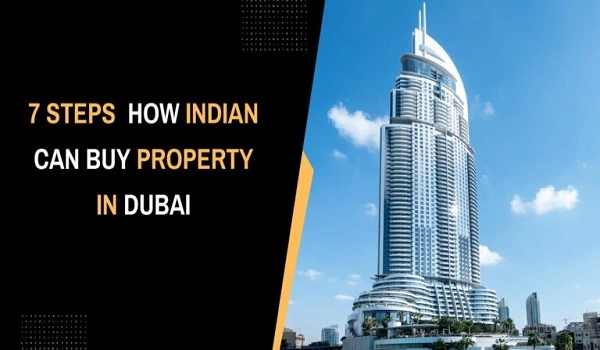Can India's Middle Class Buy Property In Dubai? A Simple 2025 Investment Guide

For many years, buying property in Dubai felt like something only billionaires, Bollywood stars, or top business families could do. But things are changing. Today, more and more middle-class Indians are exploring whether they can also own a home—or make a smart investment—in this fast-growing global city.
This guide breaks it down clearly: what it costs, how it works, and whether it really makes sense for a salaried Indian in 2025. You'll also learn how new projects like BNW La Perla are making Dubai more accessible than ever before.
Let's be honest—Dubai is still known for its skyscrapers, waterfront villas, and luxury cars. But beneath all the glitz, there are properties that offer solid rental returns, modern infrastructure, and payment plans that work for regular professionals.
Instead of asking "Can I afford a billionaire's home?", a better question might be: "Can I invest in the right location at the right price?"
- Higher Rental Income Than Indian Cities
In cities like Lucknow or Jaipur, rental income is usually around 2–2.5% per year. In Dubai, even mid-range apartments can earn 7–10% yearly. Areas like Dubai Investments Park and International City have touched even higher figures, over 9% in 2024. - Strong Price Growth
Property prices in Dubai went up about 9% in 2023–24, and experts say they could rise another 5–7% in 2025, especially in growing areas. Some buyers have made 15–20% gains in under two years by investing in under-construction homes. - No Income Tax or Property Tax
This is a big draw. Dubai has no income tax, no property tax, and no capital gains tax. So, whatever rent or resale value you earn stays with you—unless you bring the money back to India, in which case Indian tax laws apply. - Long-Term Stability
Dubai's 2040 Urban Master Plan shows the city is planning far ahead. Good roads, safety, schools, hospitals, and a strong business environment make it a reliable place to invest. - Visa Perks
If you invest at least AED 2 million (about ₹4.5–5 crore), you may qualify for Dubai's Golden Visa, a 10-year residence permit that includes your spouse, children, and even parents.
The Liberalised Remittance Scheme (LRS) by RBI allows you to send up to USD 250,000 per year per person abroad for property or other investments. The money must go through authorized Indian banks like HDFC, SBI, or ICICI.
- Entry-level homes in areas like Silicon Oasis or JVC can cost AED 600k–900k (₹1.3–2 crore).
- Mid-range apartments are usually AED 1–3 million (₹2.2–6.6 crore).
- For example, homes at BNW La Perla, a luxury waterfront project on Al Marjan Island, start at AED 2.3 million, with sizes up to 4,500 sq ft.
- Down payment: 10–20%
- Dubai Land Department fee: 4%
- Brokerage: ~2%
- Maintenance fees: AED 10–30 per sq ft per year
- Utilities and setup: DEWA, Ejari, etc.
- UAE bank loans are available for non-residents. Most offer up to 50–80% loan-to-value based on your income.
- Developer-backed payment plans are also popular. Many projects, including BNW La Perla, offer plans where you pay in steps during construction or even after possession.
- Indian banks usually don't give loans for foreign property. But you can use your LRS funds to pay.
Important: You can't borrow from a UAE bank without following RBI rules. Always check before taking a loan.
New investors should look at growing areas, especially off-plan (under-construction) homes that offer:
- Lower entry price (20% cheaper than ready units)
- Better payment flexibility
- More appreciation potential
- Dubai Creek Harbour
- Emaar Beachfront
- Tilal Al Ghaf
- Dubai Hills Estate
- BNW La Perla – Al Marjan Island: A fast-growing destination offering sea views, resort-style living, and high rental demand.
- Green homes and eco-townships are gaining popularity.
- Smart homes with app-controlled lighting, cooling, and security are now standard in many new projects.
- Tokenization is changing the game. Some platforms let you invest as little as AED 2,000 (~₹45,000) in shared property ownership. Right now, it's mostly open to UAE residents, but it may soon expand.
- This is a serious investment. You'll need at least ₹30–50 lakh upfront.
- Always work with a RERA-certified broker and a legal advisor who understands Dubai and Indian regulations.
- Read all payment terms carefully. Some "easy plans" come with hidden fees.
- If possible, visit Dubai before buying.
Buying a home in Dubai is no longer just for billionaires. It's now an option for financially disciplined, middle-class Indians who want global exposure, better returns, and a chance to own property in one of the world's top cities.
With projects like BNW La Perla offering sea-facing apartments and flexible payment plans, the dream of owning in Dubai is no longer out of reach—it just needs the right planning.